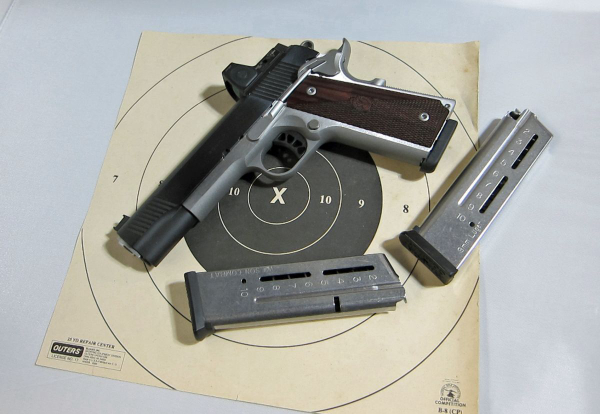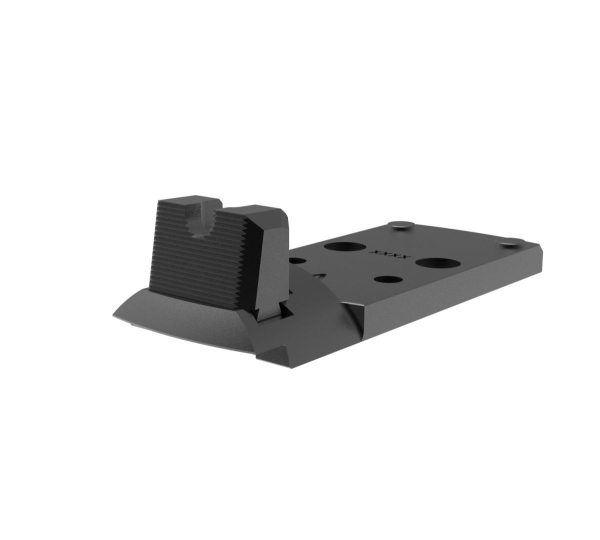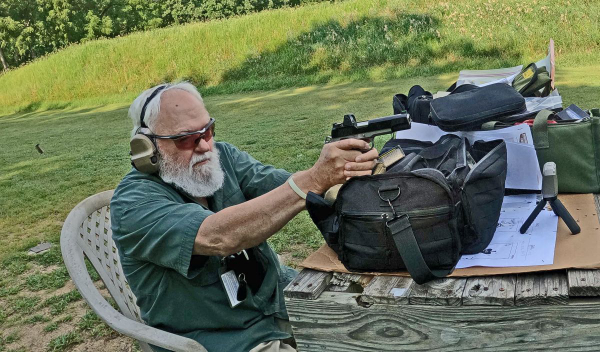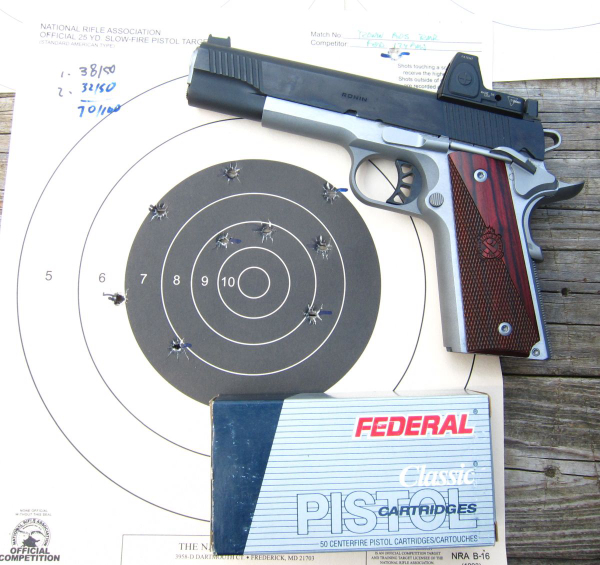
Springfield Armory has released a line of 1911 pistols that are optics-ready, an attempt to bring the centenarian into the current era. The line is the 1911 AOS -- Agency Optic System, developed from the optics-mounting system used on the 1911 DS Prodigy. The lines they are beginning with include the Operator, the Ronin and the Emissary.
Here I am, in the twilight as it were, asking myself “why?” The response from the darkness is “it just is.”
In my space, I’m hardly in a position for a full-size steel 1911, in whatever caliber, with or without glass. Not that I don’t like that original service pistol; I carried one at several times in uniform as a peace officer back as far as the mid-1970s. It’s an old friend. But lighter, shorter pistols appeal to me more these days.
Regardless, I’d requested the Ronin, a new 1911 variant to me, in 9mm – as a favor to aging joints. It arrived with the excellent Trijicon RMR PMO already mounted.
That saved some effort. While I’m only marginally a user of pistol optics, the RMR appeals to me as a real dandy.
For the price, the Ronin is above a Buick, say, but not quite a Cadillac. Of the three variants, the Ronin issues at a lower price point than the Operator and the Emissary, but it’s surely all I need. The appearance is simply outstanding.
So what’s with the optics arrangement?

The Springfield Armory 1911s in this group have the Springfield/Agency Arms optics mounting system. Available for the RMR, Shield, Delta Point Pro, and Docter optics, the AOS plate of billet steel has an integral rear sight. Mated with a fiber optic front of the proper height, you get an ideal co-witness. Additional AOS plates are available for purchase on the Springfield Armory Store.
The 41-ounce 9mm pistol – stainless receiver and blued slide, very nicely done – has a five-inch stainless barrel with an integral ramp, appropriate for a 9mm 1911. The gun ships with a single 9-round magazine.
In a trip to zero it, I shot two different loads from a rest at 20 yards. I used the Hornady 135gr. Critical Duty FTX and a box of older stock Speer 124gr Gold Dot +P. The Hornady load averaged 1,058 fps and the Speer +P averaged 1,283 fps. The Critical Duty load delivered a 1 ¾” group at 20 yards with the best three hits in ¾”.


That was no fluke; the previous effort – the first shots out of the gun – produced a 2 ½” group with three rounds crowding into 7/8”.
It was the +P load’s time to lose, but it didn’t. Both groups were five-shot efforts that came in at 1 5/8”. One “best three of five” went into 1 ¼”. The other – likely a fluke – was a 3/8” group.
That was too good. I elected to shoot a 300 point one-hand bullseye course with the Ronin.
Bringing the ancient gun into the current era, there should be speed shooting with casual accuracy. The problem with that idea is that the gun is better than that.
I had some real NRA B-16 targets – the standard slow fire course is ten rounds from fifty yards on a B-6, but they allow that stage at 25 yards using the B-16 target. It’s the same size bullseye as the B-8 timed and rapid-fire target, with slimmer scoring circles. A solid “10” on the B-8 is an “8” on the B-16. This allows me to shoot the whole 300-point course from 25 yards – one-handed, naturally.
I used the B-8 and a (planned) timed fire pace (five rounds, 20 seconds) to confirm the zero with the Federal Classic 124 grain FMJ load I was shooting. Two strings yielded an 83/100.
The gun could do better.

I jumped from that into slow fire with a B-16 target. I contrived to throw one round out of the scoring rings, the other nine showed up inside. It was a miserable 70/100.
On the rapid fire (two strings of five rounds in 10 seconds), I scored 82/100.
What did I learn? – That I need practice. The Ronin AOS made the hits vastly easier than they could have been. The trigger travel is short, the press is somewhat light – for me – but better than duty grade, and the RMR made the sighting a breeze.
The gun is better than a 78% shooter – but it is a loaner and I’m just getting to where I’m making bullseye part of my regular routine. I’ll shoot the course with about any gun of any size.
I also have the 1911 Ronin 4.25" AOS, number PX9118LAOS; this is the shorter, so-called “commander” length 1911, in 9mm with an aluminum alloy frame. This one is “slick,” no optic, but the optics cover plate with integral rear sight and a fiber optic sight, like the all-steel gun. I’ll write more about it later.
Specifications: 1911 RONIN AOS – from Springfield Armory
Part# PX9119LAOS
COLOR: Blued / Stainless
BARREL: 5" Forged Stainless Steel, Match Grade, Fully Supported Ramp, 1:16
SLIDE: Forged Carbon Steel, Blued, Optics-Ready
FRAME: Forged Stainless Steel
SIGHTS: Fiber Optic Front, Tactical Rack White Dot Rear
RECOIL SYSTEM: GI Style
GRIPS: Crossed Cannon Wood Laminate
MAGAZINES: (1) 9-Round
WEIGHT: 41 oz
LENGTH: 8.6"
HEIGHT: 5.5"
MSRP: $967 (as of this writing)
— Rich Grassi